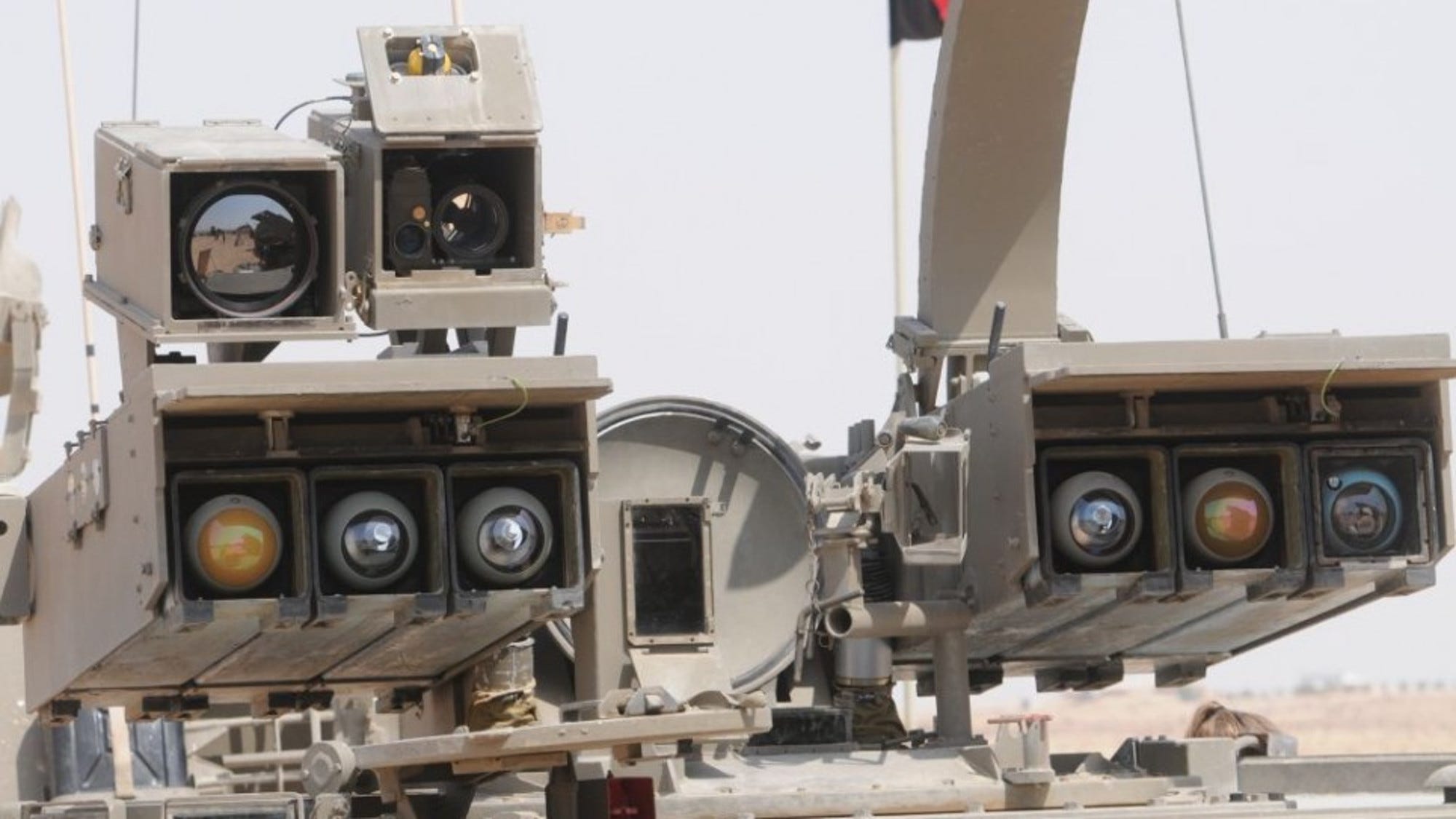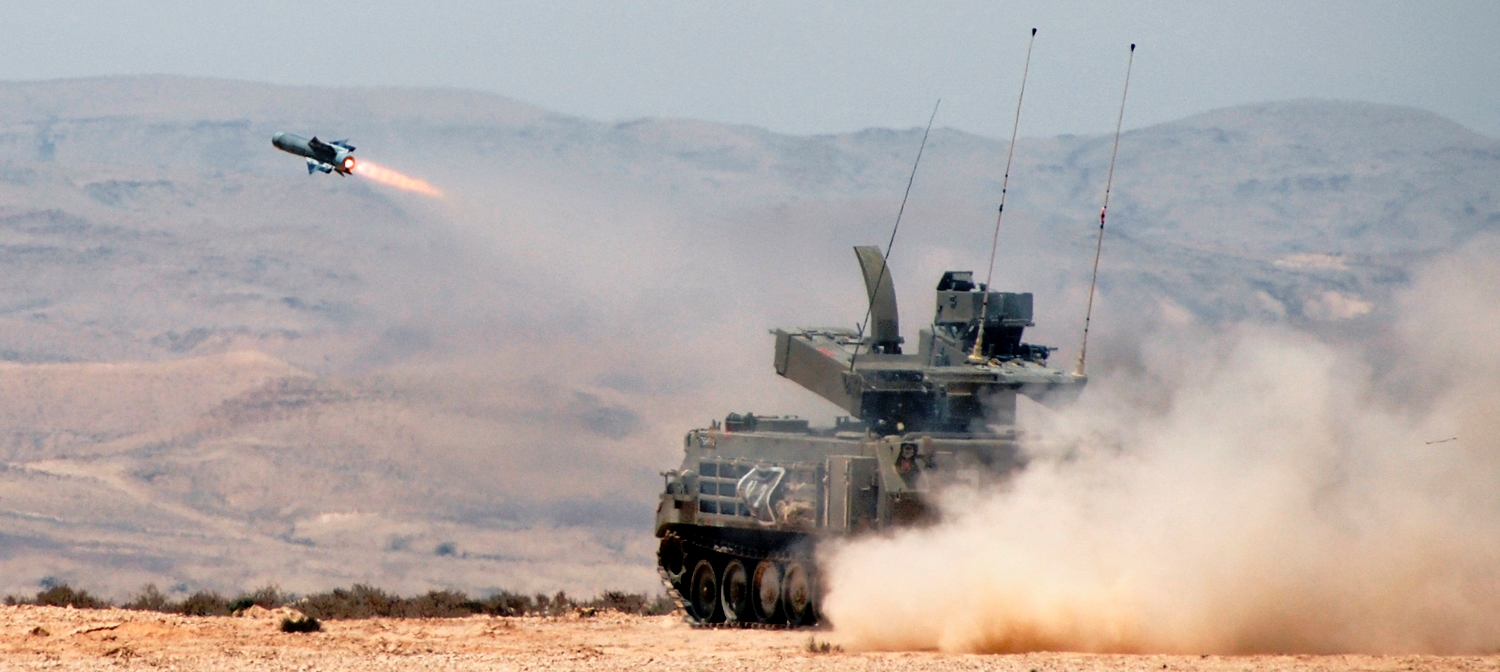by SÉBASTIEN ROBLIN
 In 2011, the second episode of the BBC documentary series Bomb Squadshowed a missile strike obliterating a team of Taliban fighters laying improvised explosive devices in Afghanistan. Afterwards, the film crew captured bomb disposal specialists discussing on the situation.
In 2011, the second episode of the BBC documentary series Bomb Squadshowed a missile strike obliterating a team of Taliban fighters laying improvised explosive devices in Afghanistan. Afterwards, the film crew captured bomb disposal specialists discussing on the situation.
“They got hit by an Exactor missile, I think, or Extractor missile?” one British soldier tells his comrades. “So there’s bits of Taliban spread liberally all over the area currently.”
Curiously, at the time, the British military did not have an “Exactor” or“Extractor” missile officially in service. The BBC had caught a glimpse of a secret weapon.
The United Kingdom only publicly admitted to the existence of Exactor in 2014. By the time the BBC special aired, the Exactor had already been in combat for more than three years.
In 2007, the United Kingdom issued an “urgent operational requirement” for a weapon to deliver counter-battery fire against mortar teams harassing British troops in Iraq. The British Army needed something that could respond swiftly and precisely so as not to cause collateral damage in the densely populated city — and they needed it right away.
In April 2007, the Defense Ministry decided in April to buy 12 M-113 armored personnel carriers fitted with Israel’s Spike Non-Line of Sight missiles, or Spike-NLOS. To speed things up, British authorities leased two more M-113s directly from Israeli Defense Force stocks.
This all seems reasonable. So, why did the United Kingdom try to conceal its new missile?
Despite the secrecy surrounding the British purchase, the weapons were not new or particularly controversial. Israel defense contractor Rafael started work on the first Spike missiles in the late 1970s to counter hordes of Egyptian and Syrian tanks.
Depending on the variant, Spike missiles can plunge down on the vulnerable top armor of a tank up five miles away. Spike-NLOS — standing for non-line of sight — can strike targets up to 26 kilometers away, more than three times the range of these earlier versions. The 150 pound missiles, which the Israelis call Tamuz, have an estimated cost of $100,000 each.
 Above and at top — Israeli M-113s armed with Spike-NLOS missiles. Israeli Defense Force Photos
Above and at top — Israeli M-113s armed with Spike-NLOS missiles. Israeli Defense Force Photos
Like earlier models, the optically-guided weapons can carry an armor-penetrating charge to blowing up armored vehicles. However, Rafael offers a variant of Spike-NLOS with fragmentation warhead ideal for blasting enemy troops.
Typically, a separate spotter acquires the target and then sends the guidance data to the launcher. In Iraq, British troops would have relied on the Watchkeeper 450 drone to find the mark.
After launch, the camera in the missile’s nose feeds back to the launcher using a radio link. The crew can manually pilot the weapon right until the moment of impact.
This sort of control system means troops can adjust targets on the fly. A soldier can even abort the attack if civilians enter the target zone.
As a result, the missile teams can perform the same role as a precision airstrike, but much faster and cheaper. In a video from Israel’s 2006 war in Lebanon, a Spike-NLOS missile soars over twenty kilometers overhead before dropping precisely through the window of a house.
These features would have been one reason to keep the existence of the missile hidden. The British Army undoubtedly wanted to keep insurgents unaware of their new ability to strike quickly, accurately and seemingly out of nowhere.
In May 2007, the British Army received the first missiles and started six weeks of training. Shortly afterwards, the Exactor units quietly joined the 1st Royal Horse Artillery in Basra in southern Iraq.
According to reports, the Exactors were quite successful in blasting enemy fighters. When the 1st Royal Horse Artillery left Iraq, the soldiers passed the launchers to the 7th Royal Horse Artillery.
As the United Kingdom’s combat operations in Iraq petered out in 2009, the British Army sent the Exactors to Helmand Province in Afghanistan. In the area around the town of Musa Qala, troops from the 1st Royal Horse Artillery again fired the missiles to “devastating effect.” When the troops returned home this time, the 39th Artillery Regiment took control of the deadly weapons.
And yet, the very existence Exactor remained a closely guarded fact. Still, before the BCC footage emerged, other clues had already leaked about the weapon.
 The Spike-NLOS Mark 5 and launcher trailer. Rafael photo
The Spike-NLOS Mark 5 and launcher trailer. Rafael photo
One 2010 review of the British Army’s 39th Royal Artillery Regiment mentioned two “Exactor troops.” These units would have been roughly equivalent to U.S. Army platoons, with between 20 and 40 soldiers each.
Separately in 2010, the 1st Royal Horse Artillery bragged on its official website about being the first to fire the still-classified weapon. On top of that, a U.K. veterans group posted a piece about Exactor on their own private site.
In 2011, Angus Robertson, the top Scottish National Party member in the House of Commons, publicly asked for details about the Exactor program. Peter Luff, the Ministry of Defense’s weapons-buyer, refused to offer any details on a “range of systems” for operational security reasons.
The missile was becoming a very open secret. “The security level of the system … was officially downgraded earlier this year after a succession of disclosures — intentional or otherwise in both official and semi-official media — and in anticipation of the missile becoming a more permanent feature of the British Army inventory,” a special report from Jane’s International Defense Review claimed in September 2013.
In spite of this apparent shift in policy, the United Kingdom remained tight-lipped about Exactor.
Another reason to keep the weapons from the public was that they posed a potential public relations nightmare. The Defense Ministry would have wanted to avoid any backlash from press reports about British soldiers killing Muslim insurgents with Israeli missiles.
In the end, the United Kingdom offered a rare public acknowledgement only after a formal inquiry by Baroness Jenny Tonge. Before becoming a member of the House of Lords in 2005, Tonge was already an outspoken critic of Israel and supporter of the Palestinians, going so far as to publicly defend suicide bombers.
In 2012, she left the U.K.’s Liberal Democrat party amid persistent accusations of anti-Semitic remarks. Two years later, the independent parliamentarian demanded to know if the Defense Ministry had purchased any arms from Israel.
“In the last five years, the Ministry of Defense has purchased the Exactor weapons system, comprising Exactor 2 palletized launchers and Exactor Mark 5 missiles, from a contractor based in Israel,” the ruling Conservative Party’s Lord John Astor explained. This was the first time a British government official had used missile’s name in public.
Of course, Astor declined to mention the United Kingdom had acquired 600 Mark 2 and Mark 4 versions in 2007. It later emerged that the delta-winged Mark 2 was difficult to control and was actually too fast to easily hit targets at shorter ranges, according to Think Defence.
The slower, straight-winged Mark 4 was both easier to handle and had an improved thermal camera to see in the dark. In 2010, the United Kingdom hired Rafael to produce a further improved Mark 5 missile.
On top of that, the United Kingdom ditched the M-113-based launchers, which were poorly air-conditioned and difficult to keep running. The carriers had little in common with other British Army armored vehicles to begin with.
The new Mark 5 weapons came with simpler, flatbed trailer launchers holding four missiles. The U.K. Defense Ministry dubbed the whole arrangement the Exactor 2.
In June 2016, British Army crews brought the missiles out for a training exercise with Royal Marines and Dutch Marines. In an article about the war game, the Royal Navy described Exactor as similar to the shorter range, shoulder-launched Javelin missile.
With Exactor troops now officially tacked on to their artillery regiments, the British Army looks set to keep these weapons ready for future combat. Given the secretive nature of the missiles, it’s possible the United Kingdom has in action right now.
No comments:
Post a Comment